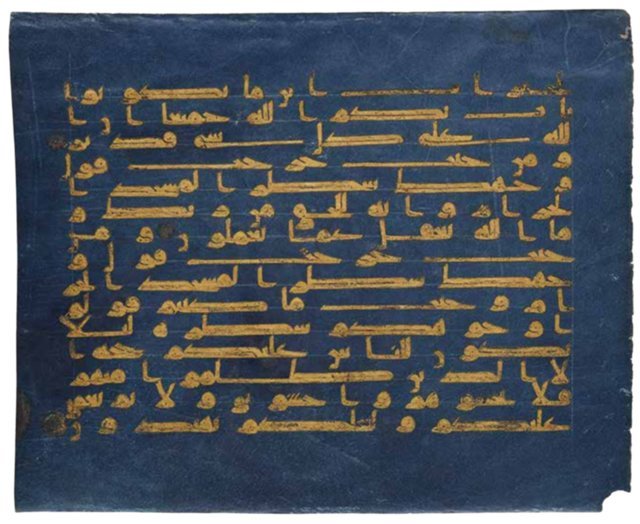Leaf from the “Blue Qur’an,” Chapter 2, Al-Baqara (The Cow): verses 148–150
- Object Name
- Leaf from the “Blue Qur’an,” Chapter 2, Al-Baqara (The Cow): verses 148–150
- Culture / Site
- Iraq, Iran, or Tunisia
- Medium
- Gold and silver on indigo-colored parchment
- Date
- 9th/10th century
- Dimensions
- 28.5 x 35.3 cm
- Credit Line
- Photograph © The Aga Khan Museum, Toronto, AKM248
- Section
- Driving Desires
- Description
The page of this sumptuous Qur’an features gold and silver script on indigo-colored parchment. The Blue Qur’an was housed in the library of the Great Mosque of Kairouan in Tunisia from at least 1294. Today more than one hundred of its 600 pages are dispersed in collections around the world and more than sixty are still in Tunisia. Although scholars disagree on the precise origins of this sumptuous book, the use of gold and silver script on parchment colored a deep blue nevertheless signals competition with the expensive purple-dyed manuscripts (from the murex sea snail) also circulating in courts around the Mediterranean basin. During the medieval period, a shared manuscript culture among Muslims, Christians, and Jews extended across North Africa, the Middle East, and Europe. Common elements in this manuscript tradition included elegant calligraphy, colorful embellishments including gold, and decorative leather bindings. Gold and leather, both prominently used in bookmaking, were imported from West Africa. Book culture likewise spread to West Africa as Islam spread across the Sahara Desert.
